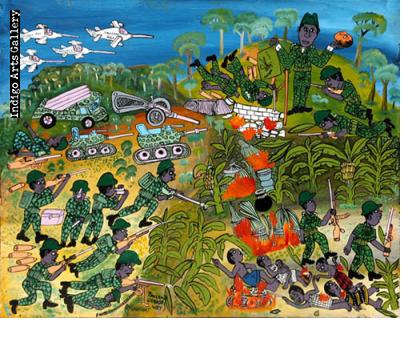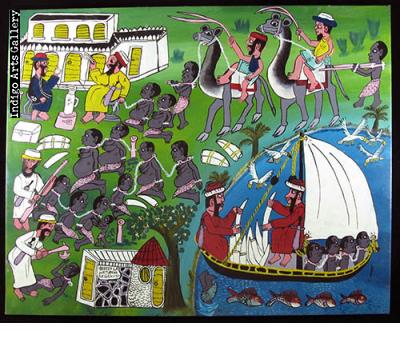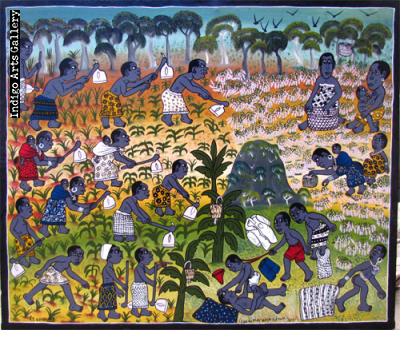About the Artist
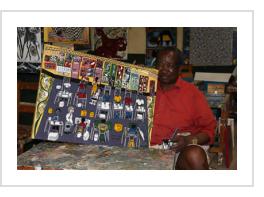
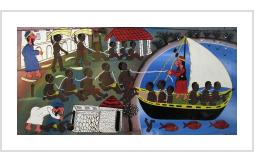
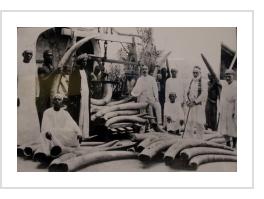
While he emerged from the famous Tinga Tinga workshop in Dar es Salaam, Mohamed Wasia Charinda (born 1947, Nakapanya, Tanzania) developed his own distinct narrative style of painting.
He started painting soon after the death of Edward Saidi Tingatinga, by becoming an apprentice to the first-generation artist Hashim Mruta in 1975. Rather than concentrating on idealized scenes of East African wildlife like many of his fellow artists, he depicts complex scenes of rural life, Makua folk tales and historical events.
Alongside scenes of planting and harvest, he does not shrink from brutal depictions of the East African slave trade, warfare in Uganda or the ritual abuse and murder of albinos. In 1989, he was the first of the Tinga Tinga artists to make the switch from painting on the original Masonite panels used by E. S. Tingatinga, to painting on canvas or other fabric. As in Haiti before, this change greatly assisted the marketing of the paintings, since expatriates and tourists could more easily carry the paintings back home with them.
Charinda’s work has been exhibited at the British Museum and elsewhere abroad, and is featured in the 2008 survey Angaza Africa: African Art Now, by Christopher Spring, curator of the Sainsbury African galleries at the British Museum. He has exhibited in Switzerland and Reunion Island, among other venues.
Charinda's paintings were also featured in the 2017 exhibit and book, Tresors de L'Islam en Afrique: De Tombouctou a Zanzibar at the Institut du Monde Arabe in Paris. This included a version of his depiction of the East African slave and ivory trade, also included in the Indigo Arts collection.
Charinda died in 2021.

